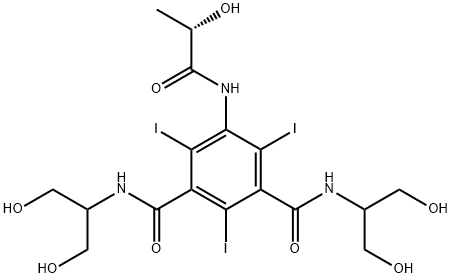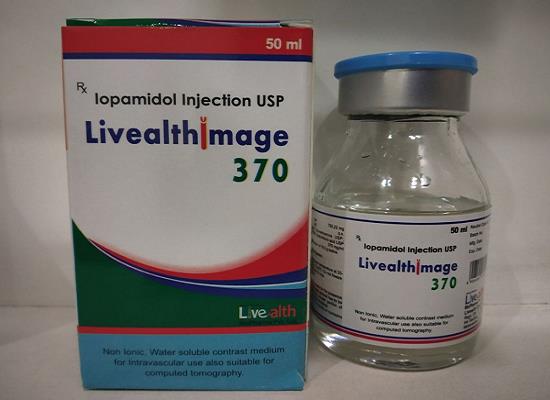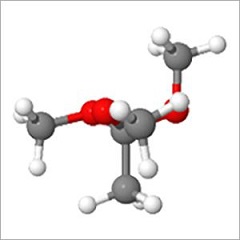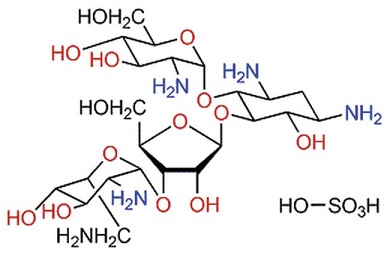Iopamidol: Application in Imaging Diagnosis
Contrast Agent in Imaging Diagnosis
Iopamidol, is a non-ionic water-soluble contrast agent, and is used as an drug used for imaging diagnosis. Its chemical structural formula is the amide compounds of triiodoisophthalic acid derivative, which has low toxicity to blood vessel wall and nerve, good local and systemic tolerance, low osmotic pressure, low viscosity, good contrast, stable injection, and little deiodine is removed from the body. It is suitable for patients who needs to do Myelography and have risk of reacting with the contrast agent. After intravascular injection of iopamidol, it is mainly excreted through the kidneys. T1/2 varies with renal function, generally 2 to 4 hours, mainly excreted in urine in the original form, 90% to 95% was excreted in 7 to 8 hours, and almost 100% in 20 hours. In vivo, iopamidol does not metabolize, does not bind to plasma proteins, and does not interfere with isozymes.
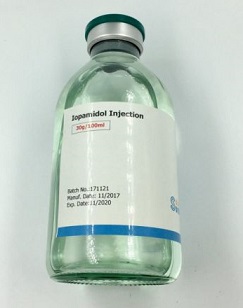
Due to its high content of iodine, Iopamidol absorbs X-rays to creat clear and distinct images, and is suitable for X-ray angiography for intravascular injection.
Iopamidol is clinically used in the angiography like cerebral arteriography. Cardioangiography includes coronary arteries, thoracic and abdominal arteries, peripheral arteries, phlebography, and digital subtraction angiography, and urinary tract, joints, fistula, spinal cord, cerebral cistern and ventricle, selective visceral arteriography. It is also used for enhanced scan in CT examination.
Precautions
1. The incidence of complications may be increased for patients with severe arteriosclerosis, hypertension, heart failure, systemic disease, and recent occurrence of cerebral thrombosis or embolism. Common side effects may include: Chest tightness, bradycardia with decreased blood pressure, nausea, vomiting, dehydration, prostration, tinnitus, skin rash, sweating, pain at the puncture site. Severe neurological complications may occur to some individuals. Very few patients may have anaphylactic shock.
2. Contraindications: Intrathecal injection is contraindicated in patients with epilepsy history, Waldenstrom macroglobulinemia, multiple myeloma, severe liver and kidney disease, and local or systemic bacterial infections.
3. Use with caution: Patients with over activity or strain, inability to maintain head erect when laying in bed, intracranial hypertension or intracranial tumors, ematapostema, a history of convulsions, chronic alcoholism and multiple sclerosis should be treated with intrathecal injection of Iopamidol with caution. Patients who are allergic to iodine-containing drugs, have allergies, hyperthyroidism, spontaneous functional thyroid nodules, at high-risk, elderly and children, have mild to moderate liver and kidney dysfunction, cardiovascular disease, diabetes, history of asthma, and blood cerebrospinal fluid should also use lopamidol with caution. Additionally, for patients with homozygous sickle cell disease, suffering from or suspected cadmium cell tumor, heterotypic globulinemia, homocystinuria, general anesthesia, congestive heart failure caused by hypertonic, chronic emphysema requiring angiography, lapamidol should be also used with caution.
4. Use iopamidol in combination with other medicines are prohibited. For example: Use in combination with thioridazine may increase the risk of cardiotoxicity, and use metformin together with iopamidol may lead to acute renal failure.
Side effects
The side effects of iopamidol are directly related to its concentration, dosage and mode of administration. The osmotic pressure, viscosity and rate of its administration can affect the incidence and severity of side effects. Common: headaches, intrathecal administration of dehydration patients may cause severe and frequent headaches. Rare: mild toxic attacks and dehydration may occur. Especially the elderly patients, patients with ammonia or debilitating patients may have shock. Additionally, dizziness, nausea, vomiting, and mental symptoms can be seen.
Reference
C. Maltoni, A. Ciliberti, G. Cotti, B. Conti, and F. Belpoggi, Benzene, an experimental multipotential carcinogen: results of the long-term bioassays performed at the Bologna Institute of Oncology. Environ. Health Perspect. 82, 109–124 (1989).
J. Huff, Applicability to humans of rodent-specific sites of chemical carcinogenicity: tumors of the forestomach and of the harderian, preputial, and zymbal glands induced by benzene. J. Occup. Med. Toxicol. 1, 109–141 (1992).
J. Huff, J. K. Haseman, D. M. DeMarini, S. Eustis, R. R. Maronpot, A. C. Peters, R. L. Persing, C. E. Chrisp, and A. C. Jacobs, Multiple-site carcinogenicity of benzene in Fischer 344 rats and B6C3F1 mice. Environ. Health Perspect. 82, 125–163 (1989).
You may like
Related articles And Qustion
See also
Lastest Price from Iopamidol manufacturers

US $1.10/g2021-08-14
- CAS:
- 60166-93-0
- Min. Order:
- 1g
- Purity:
- 99.9%
- Supply Ability:
- 100 Tons min
